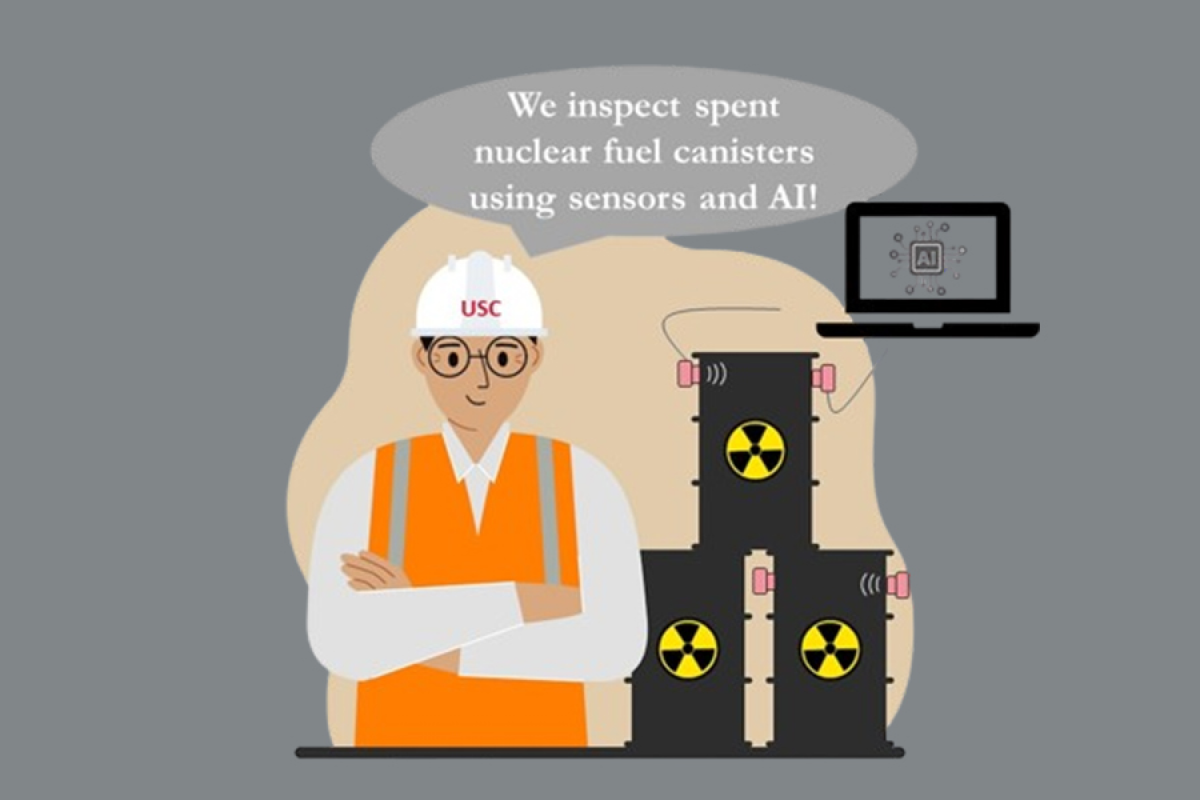When PhD student Bozhou Zhuang was asked by his PhD advisor to do research regarding nuclear waste, his first thought was: “Will I survive?”.
The advisor in question was Bora Gencturk, professor of Civil and Environmental Engineering and the director of the USC Structures and Materials Research Laboratory (SMRL). As a specialist in the long-term resilience of material infrastructure he is well aware that – if safety protocols are followed – there is a one-in-a-billion probability that stored radioactive waste would be leaked.
In fact, nuclear energy is one of the cleanest, most secure and efficient energy sources available. A single uranium fuel pellet as small as a fingertip can produce as much energy as 17,000 cubic feet of gas fuel, 1,800 pounds of fossil fuel, or 150 gallons of oil – add to that, the benefit of zero carbon emissions. There are currently 440 commercial nuclear power plants in operation, providing 20% of global electricity.
So how did nuclear energy get such a bad rap? Each year, over 10,000 tons of “spent” nuclear fuel are produced worldwide, requiring a long-term storage solution until researchers discover a way to neutralize or recycle the toxic waste. These days, excess spent nuclear fuel is contained within dry storage canisters constructed of stainless steel – an alternate solution to the waste pools within nuclear facilities (if you’re imagining something like a glowing green swimming pool, you’re not far wrong).
However, the current canister solution isn’t yet optimal. At a minimum, these containers need to store the spent fuel for 50-100 years, buying us time as we pursue the secret of how to best manage this effective – yet lethal – resource.
